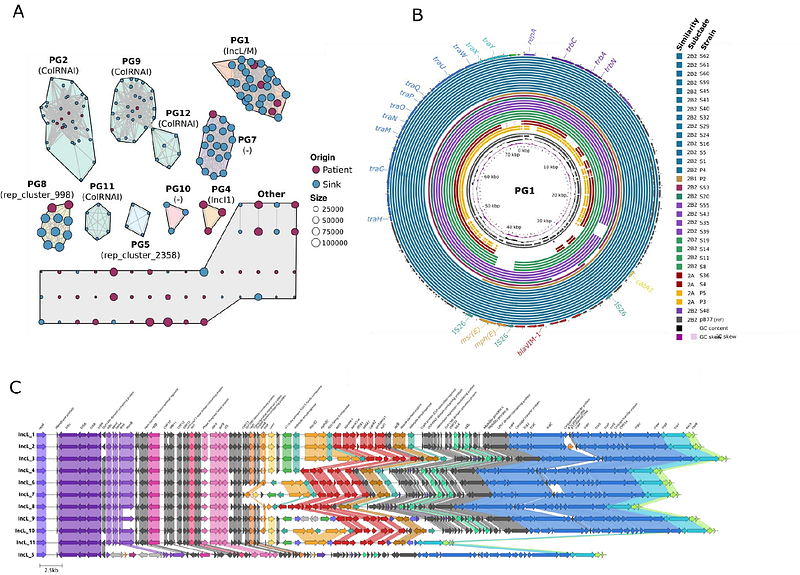Long-term dynamics of the 'Serratia marcescens complex' in the hospital-built environment

Long-term dynamics of the 'Serratia marcescens complex' in the hospital-built environment
Aracil-Gisbert, S.; Fernandez-de-Bobadilla, M. D.; Guerra-Pinto, N.; Serrano-Calleja, S.; Perez-Cobas, A. E.; Soriano, C.; De Pablo, R.; Lanza, V. F.; Perez-Viso, B.; Reuter, S.; Hasman, H.; Canton, R.; Baquero, F.; Coque, T. M.
AbstractSerratia marcescens is an opportunistic pathogen historically associated with abrupt, unpredictable, and severe outbreaks in hospital intensive care units (ICUs) and, more recently, with the spread of acquired genes encoding carbapenem resistance. However, the population biology and ecology of S. marcescens in the hospital ecosystem is still poorly understood. Here, we combine epidemiological information of 1417 Serratia isolates collected from the sinks of a large ICU ward that underwent significant demographic and operational changes (2019-2020) and 99 non-redundant outbreak/non-outbreak isolates from the same hospital (2003-2019), with genomic data of 165 isolates. We first report hospital sinks as reservoirs of heterogeneous and coexistent populations of the S. marcescens complex (SMC). A novel SMC clade congruent with the recently described Serratia nevei species is predominant, exhibiting chromosomal AmpC {beta}-lactamase with an unusual basal expression in contrast to one of the major features of S. marcescens. Persistent Serratia sink strains are identical to those involved in clonal and polyclonal outbreaks of VIM-1 and OXA-48 producers since at least 2017. The \'source-sink\' dynamics of SMC populations able to acquire the highly conserved plasmids such as IncL carrying blaVIM-1 or blaOXA-48 offer novel insights that might improve interventions to control outbreaks and treat Serratia infections in high-risk hospital areas.